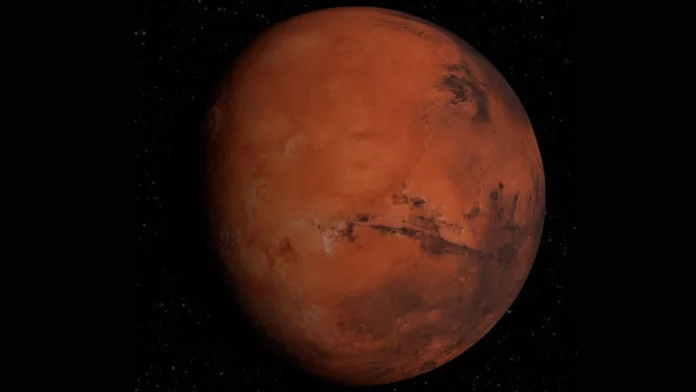The lunar occultation of Mars is set to captivate skywatchers on January 13, 2025, as the full Moon temporarily obscures the Red Planet from view. This rare astronomical event will last for nearly four hours and coincides with Mars reaching opposition, its closest and brightest point in the year. The celestial alignment offers a unique opportunity for stargazers and astronomy enthusiasts to witness Mars vanish and reappear behind the Moon.
This event will be visible across the United States, parts of Canada, Mexico, and regions of Western Africa, making it accessible to millions of skywatchers.
Event Details And Viewing Tips
The lunar occultation will begin at approximately 8:44 p.m. EST when Mars will disappear behind the Moon’s edge. The Red Planet will reemerge around 12:52 a.m. EST the following day. The precise timing may vary slightly depending on the viewer’s location.
For the best viewing experience:
- Choose a dark location: Select an area with minimal light pollution.
- Prepare for the dark: Allow your eyes to adjust to the darkness for better visibility.
- Check local timings: Verify the event’s timing for your specific region to ensure you don’t miss it.
The Moon and Mars will be visible with the naked eye, but for an enhanced view of Mars’ red hues and surface details, high-powered binoculars or telescopes are recommended.

The Best Tools For Observing Mars During The Occultation
Mars, described by astronomers as glowing with a golden-red tint, will be particularly vibrant during this event. Using the right equipment can elevate the experience:
- Binoculars: High-powered binoculars will allow you to observe Mars’ unique coloration and brightness more closely.
- Telescopes: A telescope can reveal intricate details, including Mars’ northern polar ice cap and geological features like Valles Marineris, the solar system’s largest canyon. This vast canyon, stretching 3,000 kilometers in length, is three times deeper than the Grand Canyon.
Astronomy enthusiasts with advanced telescopes may also observe subtle changes in Mars’ appearance as it shifts behind the Moon and reemerges.
Significance Of The Lunar Occultation Of Mars
January 13, 2025, the lunar occultation of Mars is particularly noteworthy as it marks the only such event visible from the United States this year. Mars’ position in opposition amplifies its brightness, making this alignment even more special for stargazers.
Future occurrences of lunar occultations involving Mars are rare for U.S.-based observers. After 2025, the next easily viewable event in the United States will not take place until 2042. For those in Scandinavia, Russia, and Asia, a similar occultation will occur in February 2025.
This rarity underscores the importance of the January 13 event as an opportunity to witness a spectacular and fleeting celestial phenomenon.

Mars And The Moon: A Celestial Dance
Lunar occultations occur when the Moon passes directly in front of a celestial body, temporarily blocking it from view. Such events are particularly striking when involving planets like Mars, as their brightness and proximity create a vivid spectacle.
During this occultation, Mars will be in opposition, meaning it will align directly opposite the Sun as seen from Earth. This alignment places Mars closer to Earth, enhancing its visibility and making it the brightest it will appear in 2025.
What Makes This Event Unique
The convergence of a full Moon, Mars at opposition, and a lunar occultation is a rare alignment, offering an extraordinary opportunity for both seasoned astronomers and casual skywatchers. The event’s wide visibility across multiple continents further adds to its significance.
For astronomy enthusiasts, the ability to observe Mars’ surface features during such an event is a rare treat. Casual stargazers, meanwhile, can enjoy the simple awe of watching the Red Planet momentarily disappear and reappear against the night sky.
The lunar occultation of Mars on January 13, 2025, is an unmissable celestial event. With its wide visibility, rare alignment, and the brightness of Mars at opposition, the phenomenon promises a spectacular experience for all who take the time to observe it. Be prepared with your viewing tools and mark your calendar for this rare astronomical occurrence.

